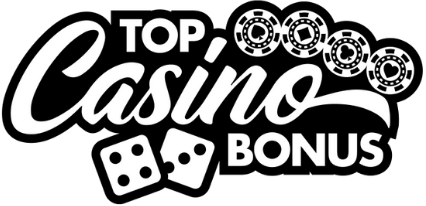Online poker vs. live poker: key differences and strategies
Trying to compare online poker vs. live poker is like stacking apples against pears. Sure, it’s still poker, but the rhythm, the tools, the tells, everything shifts. One demands digital precision, the other relies on pulse and presence. I’ve watched players transition from live rooms to online platforms thinking it’ll be a cakewalk. Spoiler: it’s not. Each version has unique nuances deserving deep respect and distinct strategies. Miss that, and you’ll bleed chips faster than a busted draw on the river.
Table of contents
How tells in live poker become data online
In live poker, the read is king. A flickering eye, a shaky hand, that annoying throat clear, each motion is a clue. I’ve seen sharks sniff out weakness like a bloodhound based on a player rearranging their chips. But online? You’re stripped of all that. Every opponent becomes faceless, expressionless, no collar tugs, no pulse checks. Everything turns into numbers, tendencies, and timing.
Track timings, not tremors
Online, timing tells matter. Does your opponent insta-check or tank and then raise? There’s info in those seconds. Good online grinders track hand histories the way a seasoned carpenter knows wood grain. Use HUDs legally where allowed, but even without tools, sharpen your memory. Patterns don’t lie, only players do.
Physical reads vs. pattern recognition
In person, I once spotted a cash game fish simply because he always exhaled hard before folding. Online, I caught a regular bluffing on the river every time they bet small on the turn after checking the flop. Different battlefield, same war. But if you enter with the wrong weapon, you’re doomed.
Speed, volume, and discipline
Here’s a major rookie mistake, jumping into online poker thinking you’ll play just one table, like in person. Online’s built for speed. Live tables are sloths in comparison. One hour live? Maybe 30 hands. Online? You’re folding more than that in 10 minutes, with four tables running.
Multi-tabling isn’t just for show
When you can handle it, running multiple tables online maximizes your edge. But don’t get greedy. I’ve seen folks go from profits to hemorrhaging bankrolls just because they opened eight tables before grasping the strategy. Master one table, then two. Know your limits before you fall down the rabbit hole.
Volume increases variance
With more hands, variance goes wild. Don’t let a brutal stretch fool you into bad adjustments. Discipline beats tilt, especially online. That’s how regulars survive and thrive. They know the math. They know variance. And they never chase losses through desperation plays.
Betting structures and game types
Different environments bring different preferences. Live poker leans heavily on No-Limit Texas Hold’em, while online poker rooms offer a buffet, Fixed-Limit, Pot-Limit, Omaha, Zoom tables, and everything between. Know your arena before stepping in. Choosing the right structure also alters play completely. Learn how game types impact your style in our detailed guide on the differences between fixed-limit and no-limit Texas Hold’em.
Table aggression and pot control
Online players tend to be more aggressive. Bluffs fly more often. C-bets are practically automatic. That’s because anonymity breeds boldness. Use it to your favor, tighten up, trap, and exploit over-aggression. But in live games, patience pays. People hate folding live. Bet for value, not fear.
Bankroll strategy must evolve
Managing your bankroll online is not the same as live. Because of faster play and greater swings, you need a deeper cushion online. If live play requires 20 buy-ins, online demands at least 50, 100 if you’re serious and grinding regularly. That’s not just theory; that’s lived experience.
Know where you play
Pick your online room wisely. If you’re aiming for the best long-term ROI, newer rooms can offer softer fields. Fresh sites often attract beginners and offer better incentives. Always check for opportunities at new casinos entering the market. A ripe fishpond beats a shark tank every time.
High rollers beware
For those betting heavy, not all platforms are equal. High-stakes players demand pristine cashout systems and VIP treatment. Choose wisely from tested high roller online casinos offering strong support and solid reliability. I’ve known veterans snub a grand game just because of one delayed withdrawal. And they’re right.
Game integrity and accountability
Live games are harder to scam. You see the dealer, the chips, the faces. Online? You’re trusting code. So play only where integrity is proven. Top-tier platforms, especially live dealer casinos, offer a middle ground, online convenience with real-time play, streamed from secure studios.
Security and transparency
Look for RNG certifications, licensing approvals, and transparent policies. Avoid obscure rooms with poor reputation. One wrongly handled payout or suspicious heads-up match can sour your entire bankroll. Trust should be earned, not assumed. And in poker, that’s more than just finance, it’s survival.
On the edge: poker vs. flashy games
Poker attracts thinkers. But online temptation is real. Bright jackpots, rapid slots, they pull attention and bankrolls away. I’ve seen former grinders lost in the depths of spinning reels. If you want something quicker-paced but controlled, tread carefully through options like jackpot slots. Flashy, yes, but far from the grinder’s grind.
Closing thought: adapt or decay
Live or online, poker rewards adaptation. Cling to old habits, and the game passes you by. Evolve your strategies, respect the format, observe player tendencies, those principles remain sacred. Don’t glamorize one form over the other. Master both. After all, it’s still poker. The real edge? It’s not in the place. It’s in the player. Don’t forget that.





0 Comments